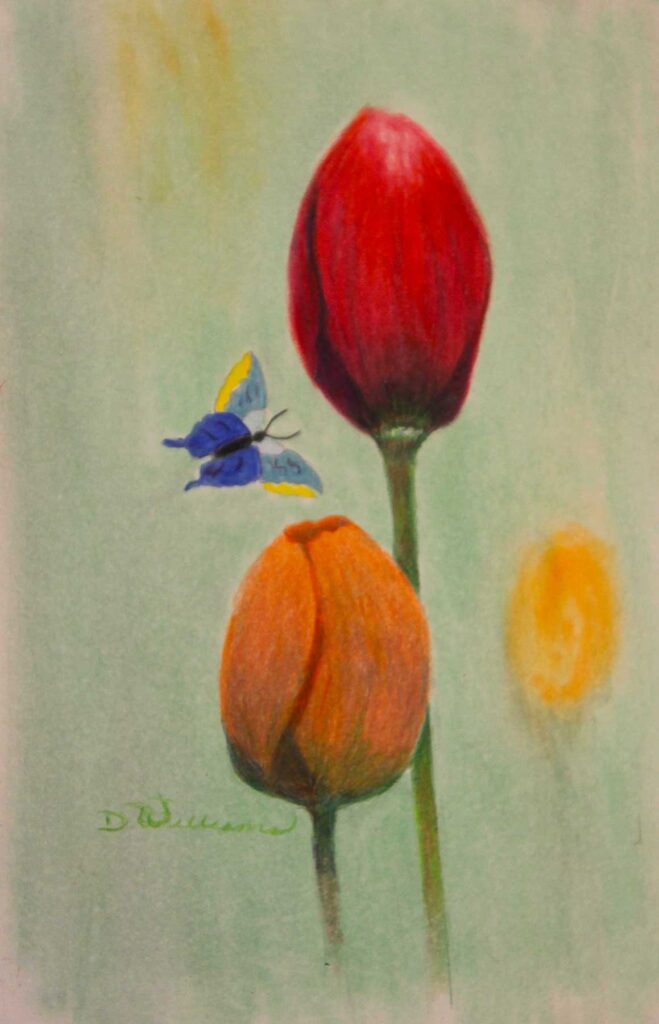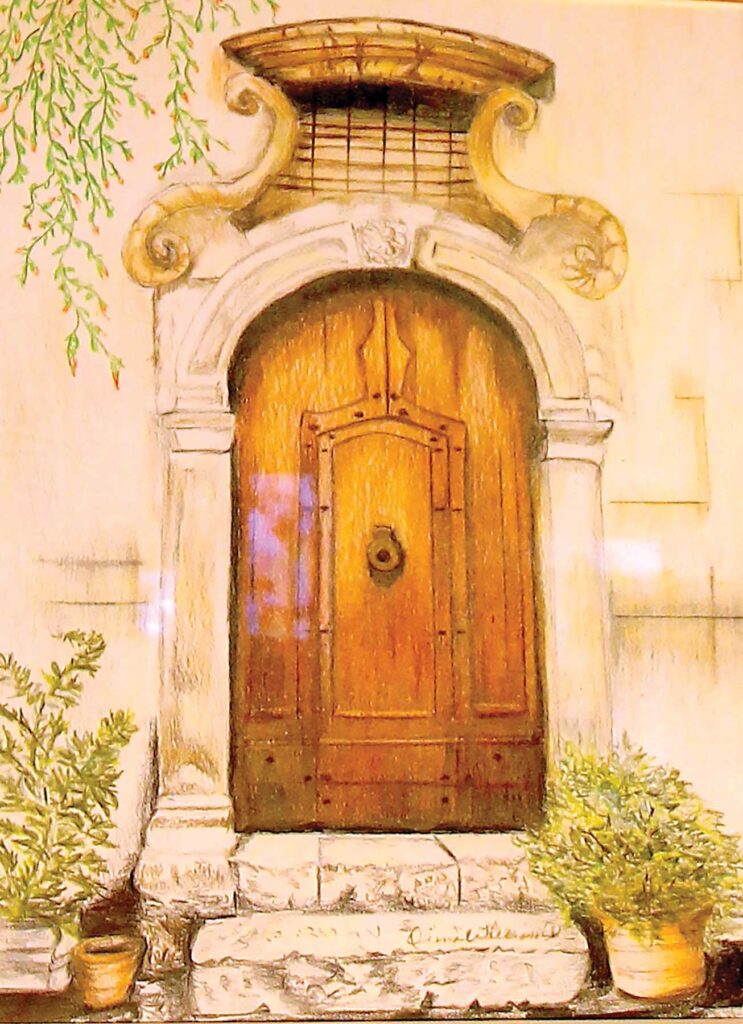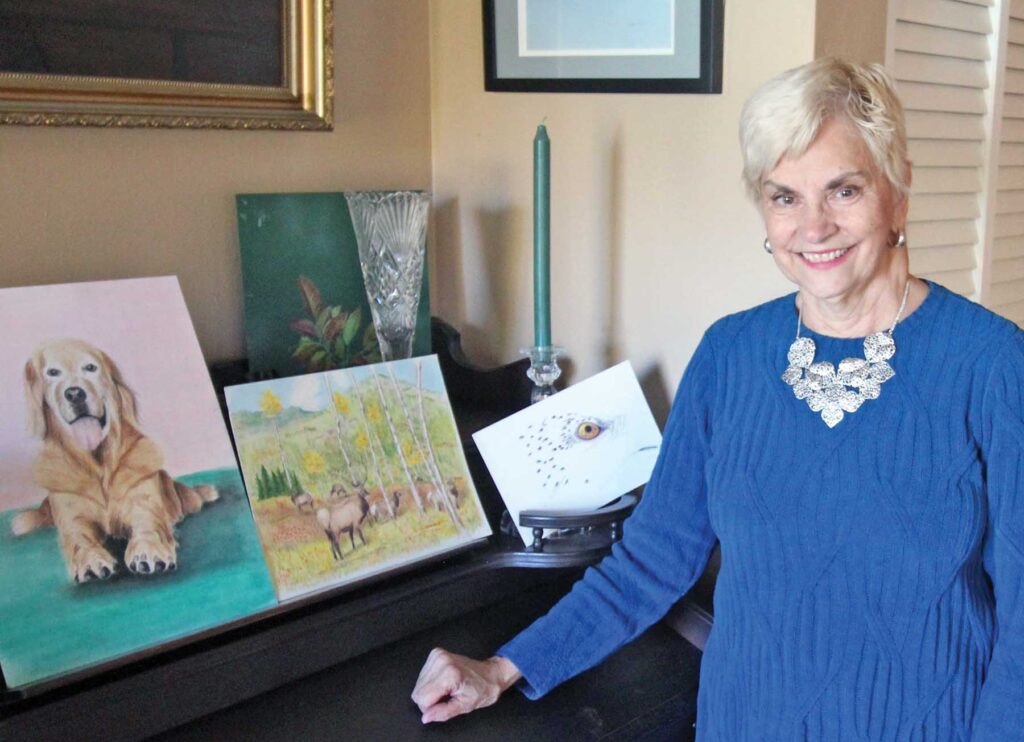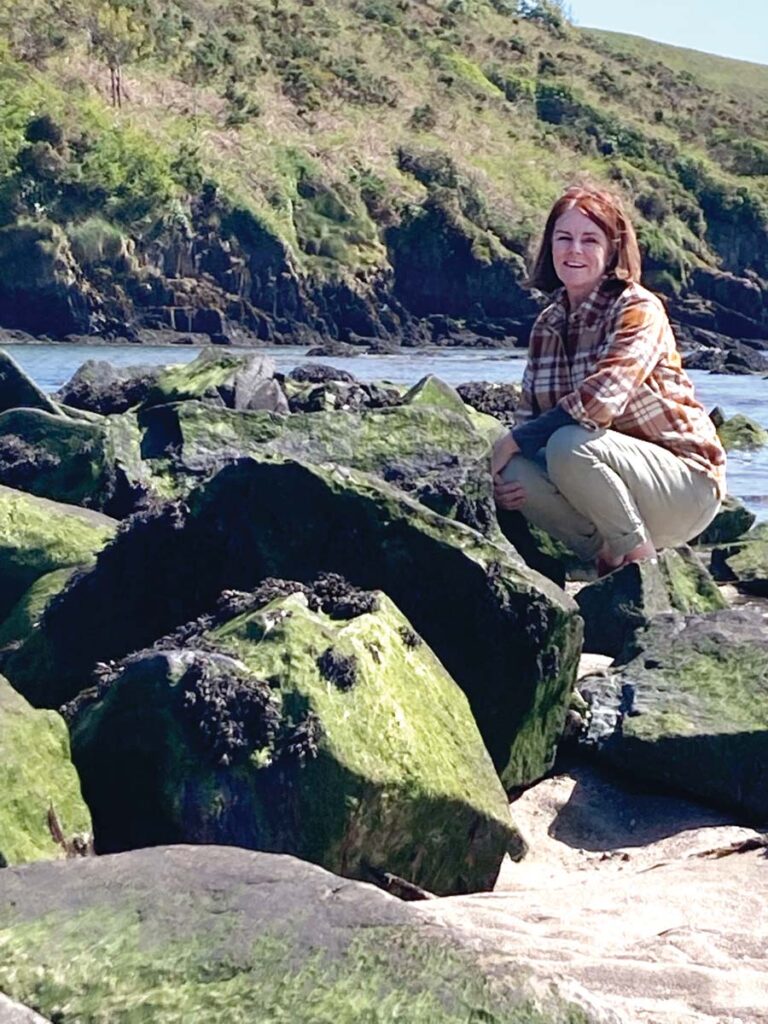A winding road took colored pencil artist Diana Williams through the banking world to doing something “military-based,” then to being a teacher of art history, before eventually discovering her own talent for art.
Williams says that through the years she has dabbled in painting with acrylics, but that her current and steady interest in art began about five years ago.
“I don’t know why, but for some reason I decided to take a class with colored pencil artist Sandra Davis, and that got me interested in that medium.” It was Davis who encouraged Williams to join the Wheat Ridge Art League. “Sandra said the mission of the League is different from other art groups. They’re very welcoming and more like a family and anybody can join.”
Williams is a “north Denver kid” who grew up at 29th Avenue and Julian Street. She attended St. Dominic’s parish elementary school and Marycrest Girls High School [these schools closed in 1973 and 1988, respectively]. She attended the University of Denver and the University of Colorado, where her major area of study was European history, Classical through the Renaissance.
She finished her undergraduate degree at Mid-Western State in Wichita Falls, Texas, in the early 1970s, during the time she was married to an Air Force man.
“I am the product of my dad being a Marine, and I always wanted to do something that was military-based,” she said. Her desire to join the military, however, was put on hold. Her husband was an enlisted man.
“I would have been an officer, and he wasn’t happy with that,” she said.
For the next decade, she would work as a mortgage banker and then a vice-president in the title industry. The idea of being in the military still tugged at her, but by then she was told she was too old.
“I looked into the FBI, and they don’t take you if you’re over 35.” Her next idea was law enforcement. She lived in Englewood at the time and finally fulfilled her “military-based desire” by being accepted into the Englewood Police Department.
“Back in the ‘80s was sort of the beginnings of women in law enforcement,” Williams said. “I did patrol, I was on the arson unit, I was on the bomb squad. I was CSI for several years, taking dead body pictures. I wasn’t large enough or strong enough to be on a motorcycle, which I would have done, or to be on SWAT. Because my waist was so small, to get all my equipment on, I had to wear my handcuffs in the small of my back. I was in a fight with a guy at the jail and was thrown onto my back [where the handcuffs were], and that caused damage to my spine, which affects me to this day.”
She retired from the department in 1994, but says, “I loved being a cop.”
Her path to creating her own art would be through the academic world of art history, studying at the University of Denver for her master’s in Medieval History. Tim Standring, curator emeritus for the Denver Art Museum, was at that time one of her professors. He encouraged her to work toward a Ph.D. with the focus on art history. She would need a background in German, he said, so she traveled to Germany to study immersion – German. He told her he knew the Latin secretary to the Pope, and she lived in Rome for a year and studied with the secretary, doing research at the Vatican Museum.
“It was fascinating to have an Italian I.D. card to get in.” While waiting for her materials, she would go up to the roof of the Vatican, to a garden, where she’d have morning coffee and a roll.
Williams taught art history at the Art Institute of Colorado for 15 years and at Regis University and CU-Boulder. Presently, she teaches art history through DU’s Osher Lifelong Learning Institute (OLLI) and has about 50 students from all over the country.
“I find it terribly interesting because it keeps my mind active while keeping students’ minds active. I’ve had students who have traveled all over the world and have been to the places I’ve been, as well as ones who’ve never been anywhere. And that’s part of the fun of teaching this group of seniors.”


Williams says she approaches art history from an historian’s perspective rather than a fine art perspective and teaches history using images.
“I want to tell the story of how an artist fit into their society and how their society influenced the artist.
“I love Tintoretto, a 16th-century Venetian. His style is something like Rembrandt, with looser brush strokes. I like the movement and drama of his work. I love Canaletto, who’s 18th century. He gives you an image of Venice that’s nearly photographic. I’m also a big Caravaggio fan.”
Of her own art, she says, “I’m still learning and developing. Many come to art from having obtained a fine arts degree.”
With that kind of training absent in her life’s journey, she said she was rather surprised to discover she could draw and create with colored pencils.
Williams’ artwork will be on display at the Apex Senior Center Art Show, 6842 Wadsworth Blvd., through Dec. 28. Call 303-425-9583 for times.






